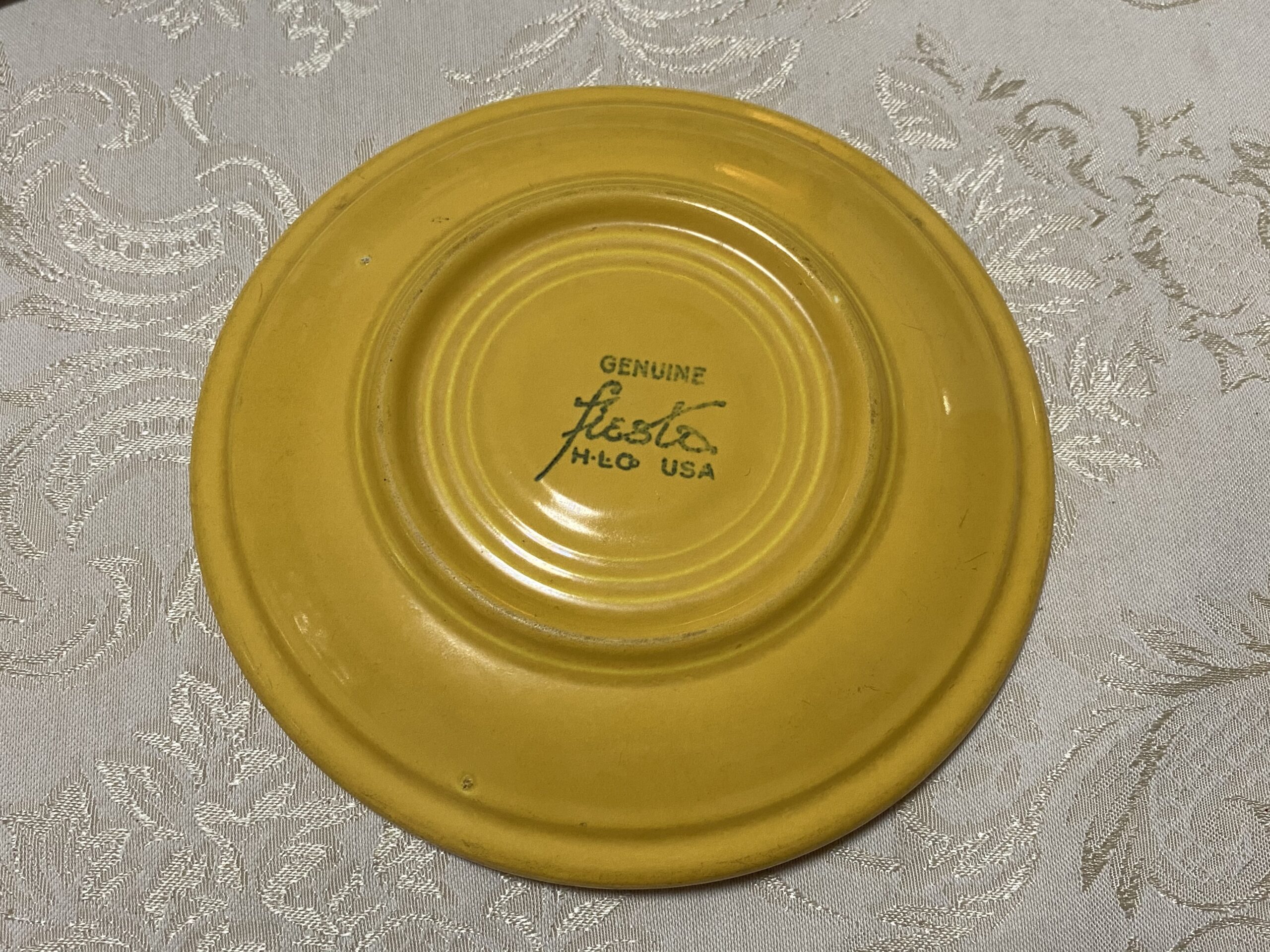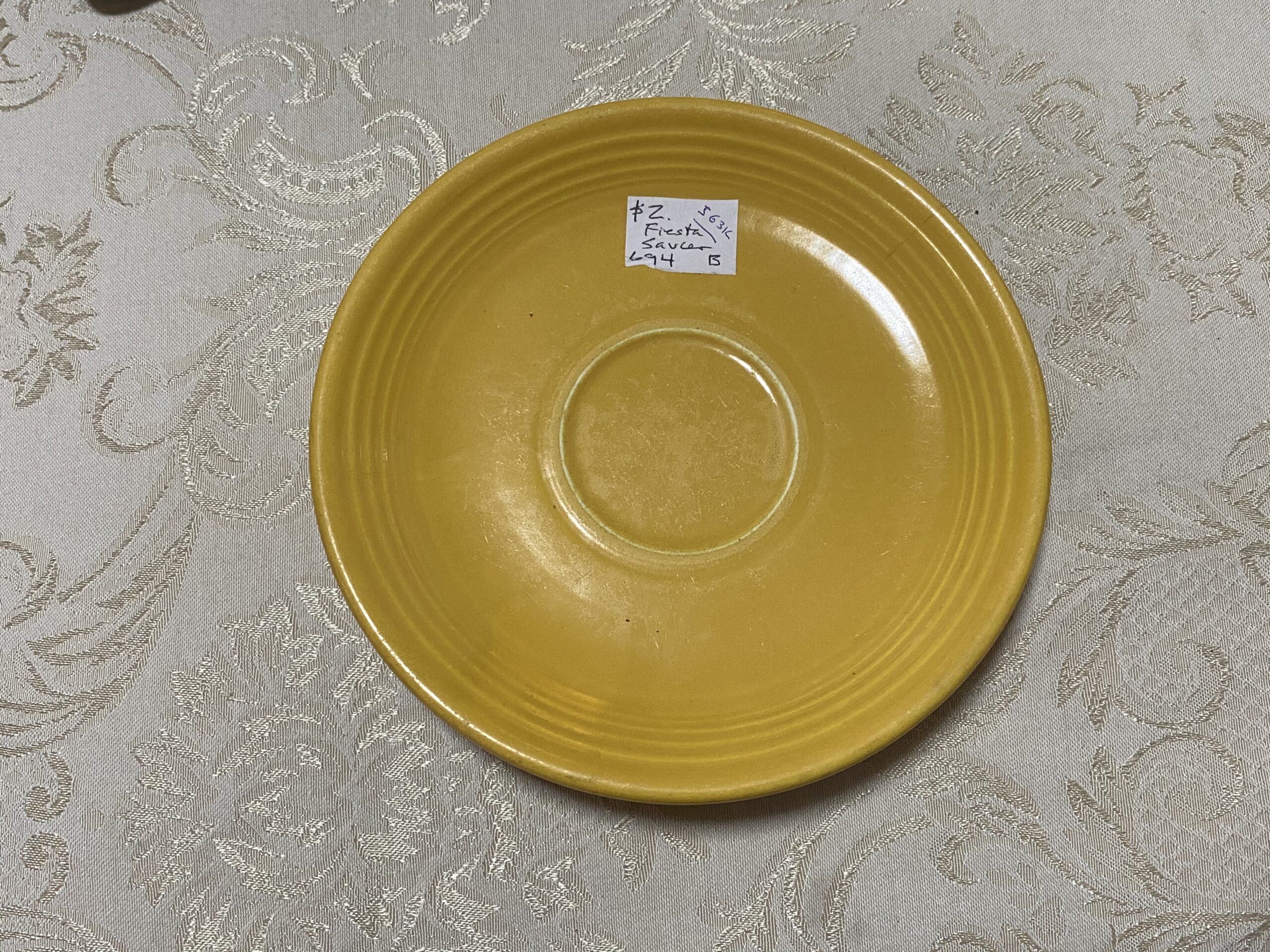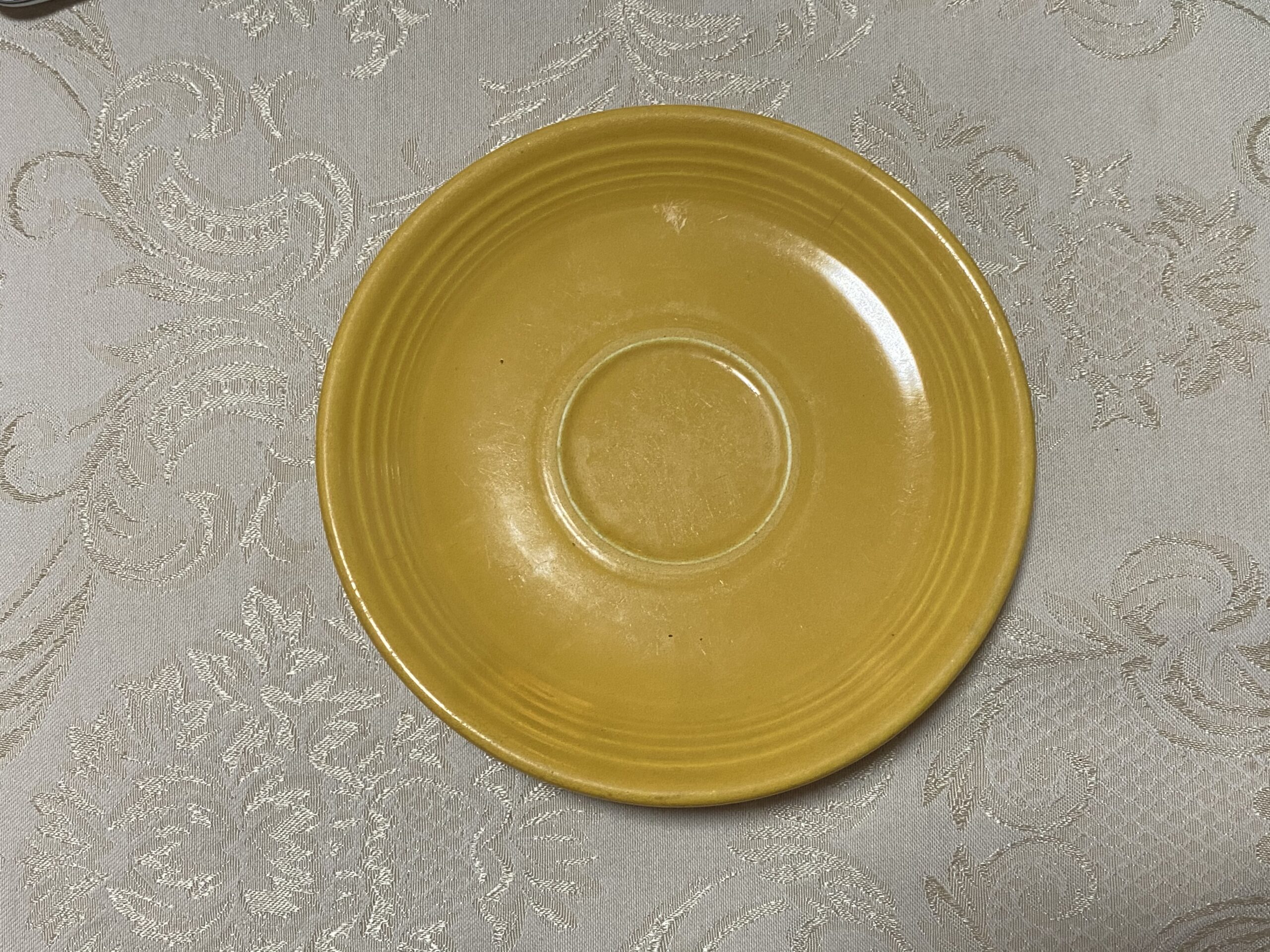Yellow vintage Fiesta plate (Made in USA): 563,800 ppm Lead (90 ppm & up is unsafe in modern items made for kids)
This is an ad-free article.
We removed ads from this article to make it easier for you to read. If you would like to support our independent consumer goods testing by contributing (which will also help us keep our more widely-read articles ad-free), click here. Thank you!
For those new to the Lead Safe Mama website:
Tamara Rubin is a multiple-federal-award-winning independent advocate for childhood Lead poisoning prevention and consumer goods safety, and a documentary filmmaker. She is also a mother of Lead-poisoned children (two of her sons were acutely Lead-poisoned in 2005).
- Tamara owns and runs Lead Safe Mama, LLC — a community collaborative woman-owned small business for childhood Lead poisoning prevention and consumer goods safety.
- Since 2009, Tamara has been using XRF technology (a scientific testing method) using the exact instrumentation employed by the U.S. Consumer Product Safety Commission to test consumer goods for toxicants (specifically heavy metals — including Lead, Cadmium, Mercury, Antimony, and Arsenic).
- Since July of 2022, the work of Lead Safe Mama, LLC has been responsible for five product recalls (FDA and CPSC).
- All test results reported on this website are science-based, accurate, and replicable.
- Items that Lead Safe Mama, LLC reports on are tested multiple times to confirm the results published (for each component tested).
- Tamara’s work was featured in Consumer Reports Magazine in February 2023 (March 2023 print edition) and The Guardian in November 2023.
First, a short video about this dish!
Published: September 21, 2021
Updated: December 2023
For context: How much Lead is “too much” Lead?
The amount of Lead considered unsafe in an item intended for use by children is anything 90 ppm Lead or higher in the paint, glaze, or coating of an item and/or anything 100 ppm Lead or higher in the substrate. Unfortunately (as discussed in many of the articles on this website) there is no law limiting total (XRF-detectable) Lead content in dishes or cookware (or really in any consumer goods not expressly “intended for use by children”).
To find 563,800 ppm Lead in the glaze on the food surface of a dish is incredibly alarming. Vintage Fiesta dishes should NEVER be used for food — and the most protective action (if you do own some of these vintage Fiesta pieces) would be to smash them (throw them in the trash and make sure they break) so that no person could (accidentally/ inadvertently) use them for food in the future (now or in a couple generations). The best we can do for future generations (our children, grandchildren and beyond) is getting these types of toxic dishes out of circulation entirely. You can read more about those considerations at this link.
Some additional reading that may be of interest (each line in the section below is a link):
- Why is it a problem if there is Lead in the glaze of dishes?
- More Fiestaware items we have tested
- Can I test my own dishes myself at home?
- What can I test with a home test kit?
- Can I send you a dish to test?
- Here’s how to use this website to search for products you have in your home (a video).
Full XRF Test Results for the Vintage Fiesta Dish Pictured
60-second test
The yellow glaze on the food-surface of the dish
- Lead (Pb): 563,800 +/- 17,000 ppm
- Cadmium (Cd): 584 +/- 53 ppm
- Mercury (Hg): Non-detect
- Arsenic (As): Non-detect
- Bromine (Br): 926 +/- 92 ppm
- Chromium (Cr): 1,691 +/- 227 ppm
- Vanadium (V): 3,125 +/- 579 ppm
- Iron (Fe): 2,951 +/- 180 ppm
- Copper (Cu): 1,238 +/- 151 ppm
- Zinc (Zn): 19,300 +/- 600 ppm
- Titanium (Ti): 3,844 +/- 719 ppm
- Tin (Sn): 47,400 +/- 1,500 ppm
- Antimony (Sb): 48,500 +/- 1,500 ppm
- Barium (Ba): 1,241 +/- 318 ppm
- No other metals were detected in consumer goods mode.
~ End ~

Never Miss an Important Article Again!
Join our Email List











What year is considered “vintage”? I have a TON of Fiesta bought after 1995. Does “vintage” have a different stamp on bottom? Thanks
https://tamararubin.com/2020/03/what-is-vintage-what-is-antique-some-definitions-to-help-you-determine-if-your-cherished-items-are-likely-to-be-toxic-or-not/